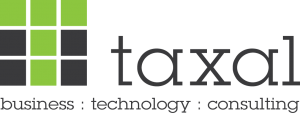Quite a sea-change this year at AU2017, with Andrew Anagnost on pole, taking over from Carl Bass as CEO of one of the world’s most well-known (and one of the largest) manufacturing, construction and (film) production software companies.
First-off, I attended the Forge Developers conference held before the main AU event. To be honest I was mightily impressed with the interest shown by customers and partners (I estimate that over ~1000 attended this keynote). Forge, for those not in the know, is Autodesk’s Cloudy developer platform and it’s a big thing. Think back to what made AutoCAD so successful. Yes, of course its unique pricing, positioning, sales and education programs, but so too AutoLISP and its successful developer ecosystem.
To the main event. Andrew’s key message at his keynote citing “More, Better, Less” focused on customers (and their workers) wanting and needing to do [and deliver] more [designs, product, quality, value etc.], with better results, [efficiency, performance etc.], for less [resource, cost, time etc.]. The age of automation is upon us its effect on business will be, as many of us know, significant; and that leads to a need to do ….more, better with less.
To me, automation means that we have more time to do value-add, not drudge. To some, however, it’s change, and that presents (some with) challenges. I do think that automation is (or will be) a key attribute affecting today’s industries, but it is just one of the factors that will play a part in business evolution (and in some cases, disruption). I’ve always believed that merely ‘automating’ limits one’s prospects. Automating what is wrong, is still wrong (albeit/ perhaps more efficient), however there are also new ways to do old things, and new things to be done.
With Andrew’s appointment we also have some new players at the top table. These include Amy Bunszel (SVP, Design and Creation Products), Lisa Campbell (SVP, Business Strategy and Marketing) and Scott Reese (SVP, Manufacturing and Construction Products). All very approachable, as is Andrew, and the message from the top is things are changing. Let me elaborate a tad:
Autodesk is refocusing on (core solutions) for manufacturing, construction and (film) production. To this point, just last year I was involved in discussions regarding adjacent areas of manufacturing (both technology and disciplines). This year there was MUCH less of that. Autodesk’s success was founded on doing the fundamentals right and allowing ecosystems to evolve to extend solution and customer coverage. Ecosystem (and platform) strategy is critical, as it is to many others including other Cloud innovators such as Salesforce and NetSuite. In this, Forge plays a big part with much happening in areas AEC (notably BIM 360), with buds of Manufacturing success. To this point, I noted yesterday that re-alignment starts now**
Construction is king…. But Manufacturing and (Media) Production are at the top table*
It’s abundantly clear that on-premise solutions, the likes of Revit, Inventor, AutoCAD et al have longevity. They’re here to stay and, in some cases, there’s more investment in these solutions than before. That should put to rest some rumours and probably disappoint some competitors.
Autodesk highlights a challenge that there is a shortage of skills, and not necessarily (in western nations anyway) a shortage of jobs. This is something that I hear a lot from the companies that I speak to. This is a big problem to solve, and a big opportunity (IMHO) for the likes of Autodesk and others in the IT industry.
Autodesk and ESRI will partner to connect GIS and BIM. This is big news for both sides and possibly reflects a positive refresh of relationships with the advent of new (Autodesk) leadership.
*Reinforced recently by comments in Autodesk’s Q3 2018 financial analyst call on the 28th November where comments like “construction is on fire” and “construction business is doing awesome right now” and “a big hurry to ramp up that investment in construction in in particular because we’re seeing so much success there”.
**In parallel to Autodesk’s Q3 2018 financial announcements, there was an announcement of a 13% reduction in headcount, coupled to scaling back in investments in some non-key areas of R&D (and off-loading some premises). With this announcement, Andrew observed that he expects a significant move towards direct customer touch and digital sales channels. He estimates that Autodesk’s channel will still grow (in revenue terms), however the split of direct to indirect business will move to 50/50. Headcount reductions (Q3 2018 announcements) are to be used in part to fund new investments in digital infrastructures (‘digitising’ the company).
